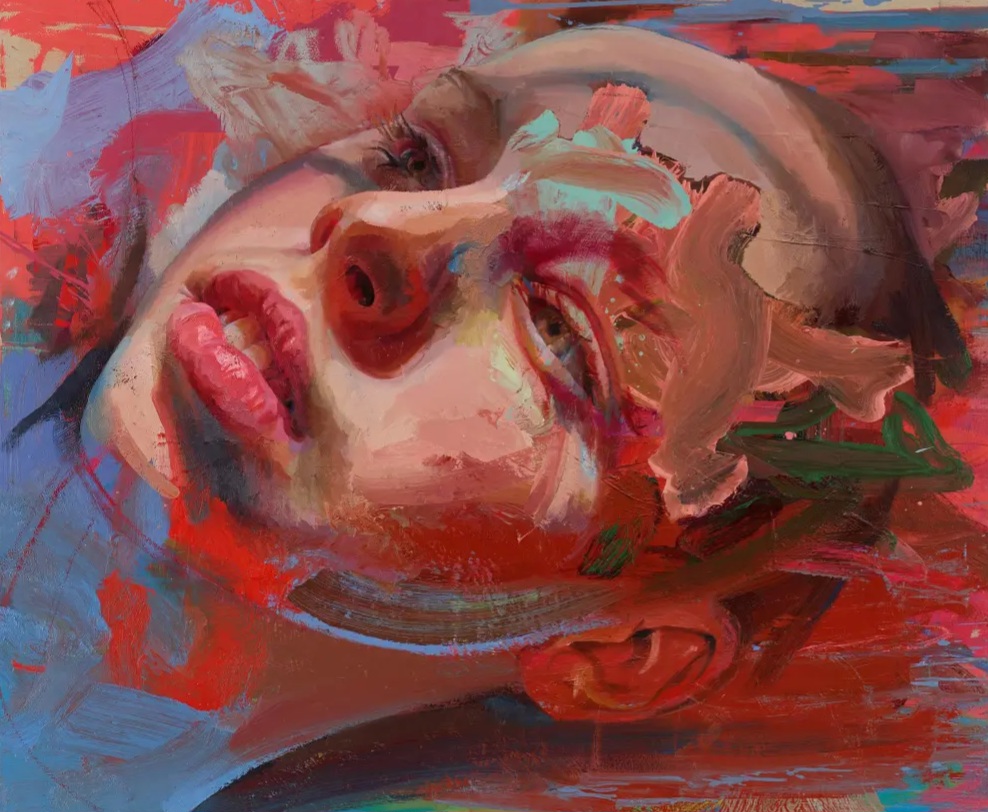★★★★★ Jenny Saville: The Anatomy of Painting at the National Portrait Gallery London

Jenny Saville: The Anatomy of Painting is the largest major museum exhibition in the UK dedicated to one of the world’s foremost contemporary painters.
Bringing together 45 works made throughout her career to date, the exhibition is broadly chronological in scope and will trace the development of Saville’s practice from the 1990s to today.
Highlighting key artworks, from monumental oil paintings to smaller scale charcoal drawings, the exhibited works will reveal the inventiveness of Saville’s practice. Curated by Sarah Howgate, Senior Curator of Contemporary Collections at the National Portrait Gallery, and created in close collaboration with the artist, the exhibition will explore her deep passion for the painting process.
Rising to prominence in the 1990s following her acclaimed degree show at the Glasgow School of Art, Saville has played a leading role in the reinvigoration of figurative painting, continuing to test its limits while maintaining connections to its history and traditions. Her works reveal a deep awareness of art history and the ways in which the body has been represented over time and across cultures.
Saville’s early figurative representations were captivating in their depictions of heads and bodies. This exhibition at the National Portrait Gallery reunites some of the paintings the artist created while still at the Glasgow School of Art, including the seminal work Propped (1992), one of the ground-breaking works that launched her into the spotlight. The self-portrait depicts the artist sitting on a stool, legs crossed and hands digging into the flesh of her thighs. The bold and intense aesthetic is one that pre-figures Saville’s later work.

Rosetta II © Jenny Saville. All rights reserved, DACS 2025. Courtesy Gagosian
While influenced by old and modern masters like Rembrandt, Francis Bacon and Lucian Freud, it is the work of abstract artists – including Willem de Kooning and Cy Twombly – that also captivates Saville. Her work explores different ways of reconstructing reality, leading her to engage more with abstract painting. She studied the work of de Kooning in the early 2000s, which proved pivotal to her art, inspiring her to integrate his modernist abstraction into her own figurative painting. De Kooning had a distinct way of depicting ‘fleshiness’ and once stated; “Flesh is the reason oil painting was invented”.
Saville has a deep interest in flesh and anatomy. She has analysed medical illustrations and observed plastic surgeons at work, studying the reconstruction of human flesh and the ways it could be transformed and reconfigured. Her visceral paintings bring this fascination to life. Observing plastic surgery operations, she said: “witnessing a surgeon makes you see how layered flesh is… I started to think about not just the anatomy of the body, but about the anatomy of painting: the layering, the pace and tempo of the painted surface, the viscosity of the paint.”
In addition to Saville’s painted forms, Jenny Saville: The Anatomy of Painting at the National Portrait Gallery will include a number of drawings, made predominantly around the subject of pregnancy and motherhood. Using charcoal, pastel and pencil, Saville’s drawings are intimate and almost sculptural in appearance, taking inspiration from the great Renaissance artists, like Michelangelo. The medium of drawing has remained important to Saville’s practice, providing an important outlet for experimentation.
Jenny Saville: The Anatomy of Painting will conclude with Saville’s most recent series of new ‘portraits,’ which offer an evolution in her presentations of flesh. While her distinct figurative style is maintained, these works fall between the figurative and the abstract. Rendered in saturated tones, for Saville, these paintings make connections between the physical and virtual in our contemporary age.
“This exhibition brings together the body of paintings I’ve made over forty years. It is with huge gratitude that I would like to thank all at the National Portrait Gallery, the Modern in Fort Worth and to the collectors who have agreed to loan my work. Special thanks goes to Gagosian for their encouragement and support of my work through these years. And to my family, who have filled my life with joy”
Jenny Saville
Artist
“Jenny Saville is one of the most important artists working today. This exhibition charts an exciting journey, from the early monumental paintings I remember well from her ‘Young British Artists III’ exhibition at the Saatchi Gallery in 1994, to her recent ‘portraits’ for the 21st century. Walking a tightrope between figuration and abstraction, the exhibition celebrates and delights in the nature of paint itself. It has been a privilege to work closely with Jenny Saville on The Anatomy of Painting.”
Sarah Howgate
Exhibition Curator and Senior Curator Contemporary Collections, National Portrait Gallery
"I am thrilled that the National Portrait Gallery is hosting the first major institutional show of Jenny Saville's work in the UK, encompassing her extraordinary paintings and drawings from the 90s to today. Jenny's eye and talent has influenced so many aspects of this show and I would like to thank her for her unstinting generosity and rigour. It has been brilliantly curated by Sarah Howgate who has brought great vision and energy to the project and has been made possible by a wonderful group of supporters and lenders to whom we are extremely grateful. We look forward to presenting this impressive survey to our audiences this summer and are so pleased that it will have a second iteration at the Modern in Fort Worth later this year.”
Victoria Siddall
Director, National Portrait Gallery
Main Image: Drift by Jenny Saville, 2020-2022 © Jenny Saville, Courtesy Gagosian.
